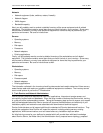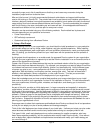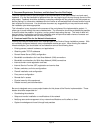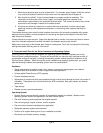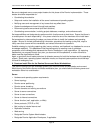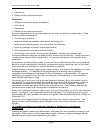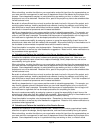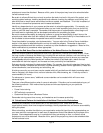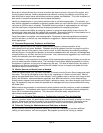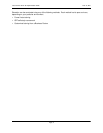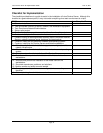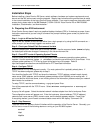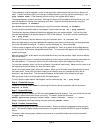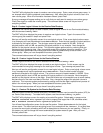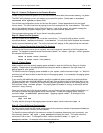
projects and cannot be disturbed. Because of this, parts of the project may have to be scheduled after
normal business hours.
Be certain to allow sufficient time not only to perform the tasks involved in this part of the project, such
as doing system backups, installing equipment and software, checking for problems, and training, but
also allow time to record issues encountered, solutions created, and feedback. This initial investment of
time results in streamlined procedures and increased satisfaction.
Identify any dependencies in your process and be certain to schedule appropriately. For example, you
may need to upgrade a piece of equipment before you can install something else, and you should not
move on until this step is complete. Remember that the process of implementation cannot begin until
the install team is organized and has developed procedures for completing the tasks.
Be sure to create accountability by assigning a person or group the responsibility of each item on the
schedule and a date when that item needs to be completed. Allow some flexibility in the schedule and in
the due dates to accommodate unexpected issues and the need for learning.
Once the schedule is complete, start implementation. You can refer to the Domino Server Installation
section in this paper for detailed directions on how to install the software. Remember to document
problems encountered and their solutions, as well as any other feedback or suggestions. Based on this,
make modifications to procedures where appropriate.
13. Train the End Users Prior to the Installation of the Notes Client on the Workstations
Notes R5 contains extensive features that cover mail, applications, Internet and remote access. Given
the large number of features that Notes has, including the new end user interface, end user training is a
vital part of the implementation process. Taking the necessary steps up front to ensure your users are
knowledgeable about the Notes product will reduce the number of help desk calls, reduce the cost
associated with technical support, and increase end user productivity and satisfaction.
End users should understand the basics about Notes. For example, they should understand how to start
the Notes interface, compose and send mail, use Web browsing, access Domino applications, create and
retrieve bookmarks, use calendaring and scheduling, etc.
A training course for your end users can be created which will provide them with basic knowledge about
how to navigate in the Notes client, mail and calendar skills, Web browsing, etc. A half-day course is
recommended (3-4 hours).
For advanced or “power users,” additional course materials can be created which will cover more
advanced topics.
There are a few different options when it comes to education. Education can be conducted using any of
the following methods. Each method has its pluses and minuses depending on your particular
environment.
Ÿ Formal Lotus training
Ÿ CBT self study course work
Ÿ Customized training from a Business Partner
Remember training saves time, money, and headaches and increases productivity
14. Schedule and Perform the Installation of the Notes Client on the Workstations
Schedule the installation of the Notes client on the workstations next. Make sure you consider
organizational needs, allow time to capture knowledge, identify dependencies, and ensure accountability
during this phase.
When scheduling, consider the effect on your organization and solicit input from the representatives on
your team and from management for each area or department that will be affected by this phase of the
process. Some departments may be in a period when they are working on time, or mission critical
projects and can not be disturbed. Because of this, parts of the project may have to be scheduled after
normal business hours.
Lotus Domino Server R5 Implementation Guide June 18, 2001
Page 29



